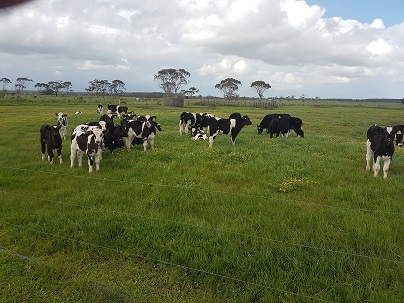Heifer Development and Lifetime Productivity

As dairy science’s focus has shifted from lactation nutrition, to transition nutrition, both with major implications to lactation performance and fertility, more recent research has discovered very significant gains in lifetime productivity from birth through the growing heifer phase.
I stress, the term lifetime productivity does not just refer to milk production and fertility; but more importantly, efficiency of both. By this I mean feed conversion efficiency; how well cows convert feed dollars to milk dollars, pregnancies per insemination, and there is a difference between cows irrespective of genetic potential: research conducted in Canada highlighted between 4 and 8 times the effect on milk production than could be expected from genetic selection.
As mentioned in a previous article, milk from fresh cows in the first seven days of lactation has very high fat and protein content. Storing of this milk and excess colostrum for feeding calves followed by whole milk at increased levels will accelerate mammary tissue development by up to six times that of calves on lower volume and lower energy/protein milk. Research (Soberon & Van Amburgh, 2013) demonstrated for every 1 kg Average Daily Gain pre-weaning, heifers produced 1500 litres more milk in first lactation.
Higher milk production and survival rates in the herd persisted beyond first lactation as opposed to control calves in this research. The long lasting effects are believed to be related to far more than IgG from colostrum, but are highly correlated to other growth factors and hormones present in colostrum. There are around 180 identified substances apart from IgG in colostrum. Calves feed high milk diets reached joining age (55% of mature weight and not related to age) three months earlier than control calves and the cost of rearing was 10% lower due to this, despite higher feeding cost.
Analysis of first lactation data over 10,500 heifers in New York State confirmed the heifers reaching joining weight to calve at 21 months achieved the 1500 litres additional milk. This analysis also revealed that for every month after a 23 month age at first calving, heifers produced 275 litres less milk. In conclusion, the first hours and weeks of a calf’s life are critical to whole-of-life productivity. The gauge of good calf nutrition is 0.8 kgs/day weight gain over the first 60 days of life.
Of course good nutrition doesn’t stop at weaning. In fact the gains sighted above in calf nutrition can be lost through poor post-weaning nutrition. Consumption of 2 kgs daily of calf meal indicates the calf is capable of being weaned and supporting maintenance and growth from grain. This is the first critical post-weaning period commonly leaving calves considerably energy deficient unless adlib grain is available.
Immediately post-weaning the calf still has not developed an adult digestive system, rumen especially, and relies heavily on a rapidly fermented energy source (grain). The risk of excessive negative energy balance and mobilisation of body fat and soft muscle tissue to meet maintenance energy and protein is common and the cause of why calves often go backwards post-weaning. This nutritional stress will also induce immune deficiency and bacterial disease has a prime opportunity to manifest into clinical disease.
Feed cost is the greatest expense in heifer rearing. Efficiency of feed conversion to weight gain/growth becomes a critical issue. The nutrient requirements of growing heifers changes very substantially over their two years of development. As above, adlib grain post-weaning is essential to meet this dramatic energy need. What we feed is critical to achieve the feed conversion efficiency necessary for weight gain per kg of feed.
This is the essence of cost effective heifer growth – achieving 55% of mature weight as soon as possible so she can be joined. Do not worry about age – weight only! To trim three or four months off time to first calving will far outweigh the cost of supplying adequate energy in the form of grain post-weaning while we await rumen development. Calves will consume 6 kgs of a quality grain mix through this phase if offered adlib; necessary to replace nutrients from milk. Adlib access to silage simultaneously will provide a very adequate diet for optimising genetic potential for growth.
Only digestion of grain accelerates development of rumen papillae essential for absorption of nutrients from forage digestion. From trial work feeding a range of grain to forage ratios, it was found 60:40 grain to forage provided the lowest cost per kg weight gain. However, as the heifers’ rumen develops to sustain growth from pasture, grain may be lowered. We find to feed 2 kgs of a good dairy grain mix containing trace and macro minerals, Rumensin and canola meal provides a very good balance to pasture and sustains growth rates to meet our 21 month first calving.
I appreciate the current economics of dairy farming would cause many to shudder at the above; however, we need to emerge from the current financial difficulties with as few legacies as possible. To raise a crop of poorly fed heifers will affect farm profit for many years to come, as underperforming cows and probable early culls.